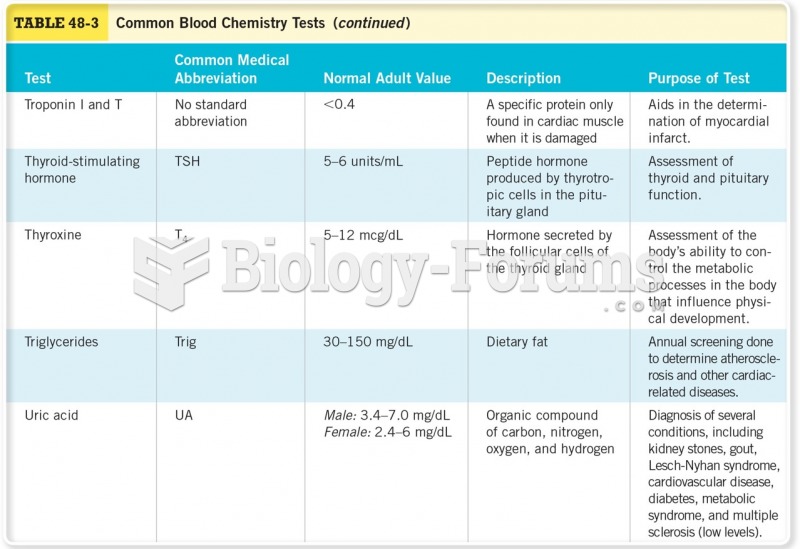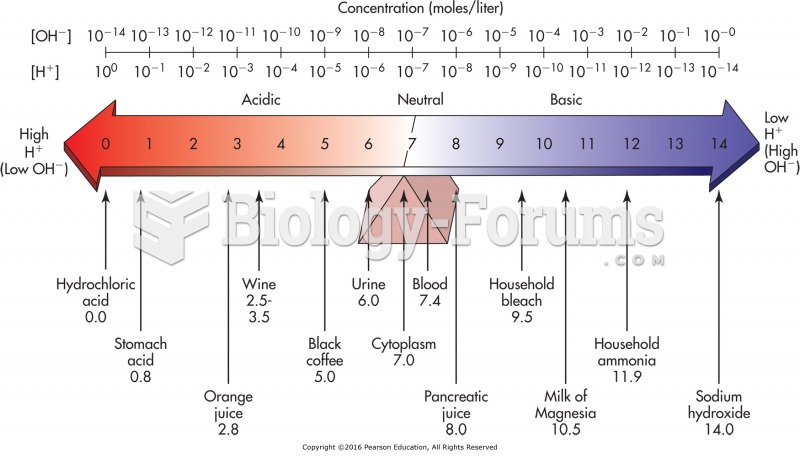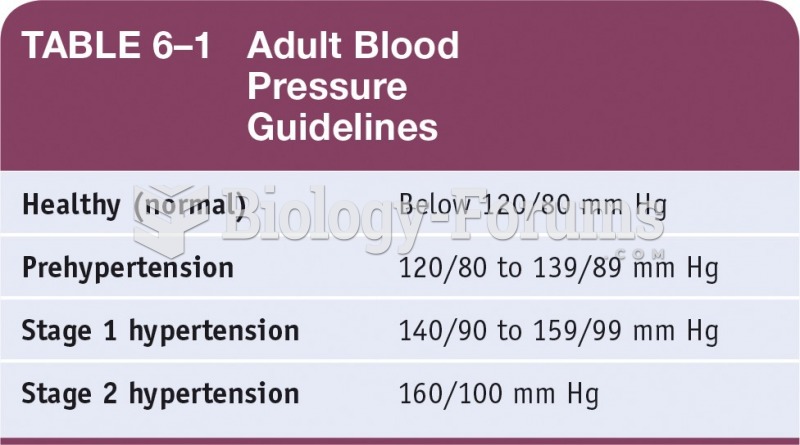|
|
|
Most childhood vaccines are 90–99% effective in preventing disease. Side effects are rarely serious.
When blood is exposed to air, it clots. Heparin allows the blood to come in direct contact with air without clotting.
Long-term mental and physical effects from substance abuse include: paranoia, psychosis, immune deficiencies, and organ damage.
Stevens-Johnson syndrome and Toxic Epidermal Necrolysis syndrome are life-threatening reactions that can result in death. Complications include permanent blindness, dry-eye syndrome, lung damage, photophobia, asthma, chronic obstructive pulmonary disease, permanent loss of nail beds, scarring of mucous membranes, arthritis, and chronic fatigue syndrome. Many patients' pores scar shut, causing them to retain heat.
The immune system needs 9.5 hours of sleep in total darkness to recharge completely.







